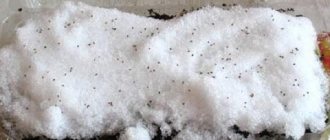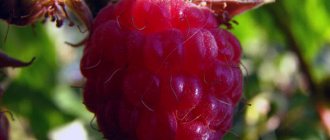Spring care of strawberries lays the foundation for a good harvest. After winter awakening or when transplanting bushes to a new location in spring, they need special attention. Many gardeners believe that strawberries are an unpretentious crop and they bear fruit under any conditions, but this is not so. Some varieties are quite demanding on growing conditions and their yield may decrease even with standard care. In order for plants to bear fruit abundantly and for a long time, it is necessary to put in a lot of effort and take into account all the subtleties of care.
Bush processing
Strawberries require careful care. To get a good harvest, you need to work hard. Many summer residents are interested in how to care for Victoria in the spring.
Crop care begins immediately after the snow melts. At this time, it is recommended to scald the strawberries with boiling water. This will not harm sleeping bushes, and the soil around will be disinfected.
After this, you need to trim last year's leaves from the bushes. The entire plot should be cleared of debris, last year's mulch, plant debris and frozen bushes. They may contain pest eggs and pathogenic bacteria. It is recommended to cut the soil between the rows to a depth of approximately 3 cm, adding a new portion of humus
Additionally, the bushes are treated with a 3% solution of copper or iron sulfate, or a 1% solution of Bordeaux mixture.
How to get a good strawberry harvest every year
So why do some gardeners have their beds literally strewn with sweet, fragrant Victoria every year, while others don’t even have a handful? The secret is actually simple. The soil conditions have a great influence on the yield of this crop. If it has a good balance of moisture and minerals, then Victoria will feel great.
Well, don’t forget about periodic weeding and watering during dry summers. To prevent crust formation, the soil around the plant must be loosened periodically. This procedure will provide the root system with proper access to air and moisture. In winter, the plantings should be covered with a snow mound and care should be taken to ensure that it is not blown away by the winds. This will prevent the soil from freezing and will help Victoria survive particularly frosty days.
Delicious and bright Victoria strawberries
For those who have not yet acquired beds with such an amazing berry as Victoria, we strongly recommend that you allocate a place for it on your plot. Its use has a beneficial effect on the circulatory system, kidney and liver function. Doctors also recommend using it for people suffering from diabetes. Thanks to a wide range of vitamins, Victoria is very useful for children to maintain the functioning of the immune system. And the bright taste and beauty of this berry cannot lift your spirits.
Author of the article: Skorobogataya Tamara Dmitrievna
Tags: strawberries, vegetable garden
- Related Posts
- What flowers should be sown for seedlings in March - planting dates (calendar)
- Passionflower: cultivation and care, maintaining vines at home (photo)
- Beautiful geranium - growing and care at home (photo)
« Previous entry
Transfer
This crop can be replanted in spring, summer and autumn. In the spring, April is considered the most favorable period for transplantation. Plants transplanted at this time take root faster and suffer less. You can replant Victoria in May, but in this case you need to carefully monitor the soil moisture, otherwise the bushes will not take root.
The plantings should not be allowed to become dense. In rows, bushes are planted at a distance of 20 cm from each other, the row spacing should be about 70 cm.
Healthy seedlings are used for transplantation. Its indicators are a developed root system and a stem neck of at least 1 cm in diameter from which 4-5 leaves emerge.
Well-lit areas sheltered from the wind are more suitable for strawberries.
The crop prefers light, fertile soil, so before transplanting the plot needs to be dug deep and fertilized. For 1 sq. m, 2 buckets of humus and 1 kg of wood ash are added. If the soil is clayey, then you can additionally add 1-2 buckets of washed sand. It is recommended to carry out additional treatment of the soil with disinfectant solutions. If the soil is highly acidic, add 2 handfuls of wood ash to each hole.
Planting material can also be disinfected with a weak solution of potassium permanganate and treated with a growth stimulator. To do this, you can use the popular products “Sodium Humate”, “Potassium Humate”, “Kornevin”. In specialized stores, among the lines of well-known drugs “Ovyaz”, “Bio”, “Aquarin”, there are formulas developed for strawberries and wild strawberries.
Basic care for strawberries in spring correctly
The basic strawberry care steps you need to follow are given below and include:
- cleaning the area from plant debris;
- trimming old leaves and tendrils;
- replanting old bushes;
- loosening the soil;
- watering;
- carrying out fertilizing;
- treatment against diseases and pests.
photo@Irina_kukuts
So, now about everything in order:
1. Cleaning the area from plant debris
Immediately after the snow melts and the ground dries, it’s time to start putting things in order in the area with berries; you need to clear it of old leaves and other organic debris.
If you insulated strawberry plantations for the winter with covering material in the fall, remove it and put it away for storage, since the bushes may shut down during sudden warming.
If the insulation was carried out using covering material such as branches, sawdust, hay, tops or other organic residues, then it must also be removed along with dry leaves with a rake.
Cleaning them will allow the root system to warm up better during the day, and the plant will quickly wake up from hibernation.
2. Trimming old leaves and tendrils
The next step is to remove old leaves, remaining tendrils and flower stalks with dry berries.
For this operational procedure, use garden shears or pruning shears.
Your task is to remove everything unnecessary, leaving only a few new green leaves, including basal leaves.
Important!
As a final touch, sweep around the plants with a thick, stiff broom to collect all previously removed organic debris. To prevent the spread of various diseases and pests, burn all collected garbage.
3. Replanting old bushes
After cleaning the area, it's time to conduct a quality check of our strawberry bushes.
Caring for strawberries in the spring means replanting old bushes.
To do this, you need to carefully examine all the plants one by one, determining their quality, viability, and, consequently, fruitfulness.
Remove dried and weak bushes from the garden bed, replacing them with new, viable ones.
To transplant a new bush, use dividing the mother bush into several parts, or use strong mustaches.
The basic rules for replanting bushes are presented below.
Rules for transplanting strawberry bushes:
- dig up a dried, weak bush at the root and remove it along with a lump of soil, since there may be pests in the roots;
- take several mature and healthy bushes or good strong mustaches for seedlings;
- divide their rhizome into parts, each of which should have its own growing point and at least 2-3 leaves;
- treat the roots in a weak solution of potassium permanganate;
- prepare a hole; to plant a new plant, add nitrogen fertilizer (peat, humus);
- fill the dug hole with water (using only warm water);
- After absorbing the water, place the new plant in the hole;
- cover it with earth, carefully holding it, the growth point should be located slightly above ground level, which will avoid rotting of the bush;
- Re-water thoroughly.
4. Loosening the soil
After the soil dries, it is necessary to loosen the row spacing.
This will contribute to better retention of moisture in the soil and provide oxygen access to the root system.
When loosening, do it carefully, without damaging the roots, and at the same time remove weeds.
Cover the exposed roots with soil and hill up the bushes.
If the plant has sank deeply during the winter, lift it by carefully digging it up and raising it to the required height.
5. Caring for strawberries in spring - how to water
After a snowy winter, the soil is well saturated with melt water, but it quickly evaporates and therefore requires regular watering.
The root system of strawberries is located at a depth of 20-30 cm from the surface of the earth, which creates additional moisture requirements; water deficiency has a bad effect on the formation of the ovary.
Important!
By visual signs you can determine if the leaves are withering, then watering the plant is urgently required.
Watering in early spring is carried out based on the appearance of the plant.
One of the effective ways to determine the watering needs of strawberries is as follows.
Note!
Make a hole 30 cm deep, take a handful of earth from the bottom and squeeze it in your palm. If, after unclenching your hand, the soil falls into pieces, then there is no need for moistening, but if the soil crumbles into dust, then the verdict is clear - urgent watering is required!
Strawberries love abundant watering; on average, each bush requires 1.5 - 2 liters of water, the frequency of watering is once every 5 - 7 days (in the absence of rain).
It is recommended to water in the early morning or in the evening, in the absence of sun, to avoid leaf burns and rapid evaporation of moisture from the soil.
Before the flowers appear, it is better to water by sprinkling, this will stimulate abundant growth of greenery.
In addition to the above watering method, moistening can be carried out between the rows (drip method or in the holes between the bushes).
When watering, pay special attention to the temperature of the water; the water should sit in the sun to warm up (do not use cold water from a spring or well).
Despite the need for moisture in strawberries, excess water is also harmful to them, as it leads to the development of rot and infection. This is typical for cool weather, wet weather during the period of fruit set and ripening.
A good practice after watering is to mulch the beds with freshly cut grass or straw, this allows you to retain moisture in the soil, reducing the frequency of watering.
6. Fertilizing
An important element in caring for strawberries that cannot be ignored is the application of fertilizers.
Most gardeners use organic fertilizers because they are considered more harmless and do not lead to overdoses.
As a result of the use of mineral fertilizers, on the contrary, you can easily allow an excess, which negatively affects the taste of the berries and makes them dangerous to human health.
Based on the above, fertilizers are divided into two types: organic and mineral.
- Fertilizing with organic fertilizers
Apply the first fertilizing after the snow melts, at the beginning of active growth of the bushes.
Fertilize before flowering begins, in stable warm weather. The application of such fertilizers will have a beneficial effect on the active growth of greenery and the formation of ovaries.
The following organic fertilizers are used for fertilizing:
- Urea can significantly increase the productivity of your plantation. Before flowering, spray the bushes with a urea solution in the following ratios: 25-30 grams / 10 liters of water.
- Chicken manure is a good supplier of nitrogen necessary for plant growth in the spring. Requires strong dilution in the following ratios: 1 part litter / 20 parts water. The infusion is prepared for 3–4 days, after which the bushes are watered with it by applying the infusion at the root of the plant, at the rate of 0.5 liters of infusion / 1 bush.
- Mullein is used as an infusion. Preparation: dilute 0.3 kg of manure in 15 liters of water, preparation time - 2-3 days. After preparation, apply the resulting infusion into the furrows dug along the bushes. 15 liters of infusion is enough for 4–6 linear meters. Apply the fertilizer at the root of each plant so that the solution does not get into the foliage. An alternative method to the above is to spread manure under the roots of plants, sprinkling a small layer of earth on top (up to 3-4 cm).
- Humus, this fertilizer with remarkable properties, is simply scattered on the soil under the leaves; at the same time it also serves as mulch.
- Nettle, nettle or other weeds are used as this fertilizer. To prepare the infusion, take: 0.3 buckets of greens, after chopping them, fill them to the brim with water. Leave for 2 days, then dilute the infusion in water in the ratio: 1/3 and water the strawberry bushes with it in the aisles at the rate of 10 liters per 1 m2.
- Wood ash. To prepare the solution, pour 1 cup of sifted ash into a bucket of water, mix everything, add the solution to the soil under the plant at the rate of 1 liter per 1 m2. You can also sprinkle ash powder on the soil under the bushes.
- Yeast. The composition of this valuable fertilizer includes: nitrogen, zinc, potassium and other useful substances. Dilute 0.2 kg of raw yeast in 0.5 liters of warm water, leave it for 20-30 minutes, then add another 9.5 liters of water to the solution (to make a total of 10 liters of liquid). When the solution is ready, water the bushes of your plantation with it generously.
Important!
Strawberries love foliar feeding, so spray them with organic fertilizers; for this, the solutions are diluted in half.
- Fertilizing with mineral fertilizers
Mineral fertilizers are usually applied in the autumn, after harvesting.
Apply spring fertilizing after the noticeable appearance of foliage; for spring fertilizing with mineral fertilizers, use the following compositions:
- superphosphate, potassium sulfate and ammonium nitrate in proportions: 35-55 grams / 25-35 grams / 35-45 grams based on 1 m2 of soil. Directions for use: sprinkle between bushes.
- ammonium nitrate (nitroammophoska) - 35-45 g per 1 m2. Directions for use: scatter between bushes.
- ammonium nitrate (nitroammophoska) - dilute 25-30 g in 10 liters of water. Directions for use: water at the rate of 0.5 liters per bush.
- urea - 1 tablespoon diluted in 10 liters of water. Directions for use: water under the bush at the rate of 0.5 liters per plant.
- potassium sulfate - 25-30 grams. Method of application: scatter under the bush at the rate of 1 m2, use ready-made mixtures containing all the necessary microelements.
Important!
Most often, dry types of fertilizers are used for strawberries, by scattering them between the rows before loosening.
7. Treatment against diseases and pests
The most important stage in spring strawberry care is pest control and disease prevention.
The best way to combat pests is prevention, because it is easier to prevent than to deal with their consequences.
In the spring, prevention is given great importance; it is recommended to carry it out after loosening the top layer of soil until applying a fresh layer of mulch.
note
Among the common pests of strawberries are the following: nematodes, transparent strawberry mites, aphids, weevils, spider mites, cockchafers, mole crickets, etc.
Common diseases inherent in strawberries:
- powdery mildew,
- root rot,
- white and gray rot,
- viral mosaic,
- fusarium wilt.
It is important to note that if you carry out preventive measures in a timely and competent manner, using special preparations, you can avoid these diseases and provide reliable protection against pests.
Important!
Remember also that plant (organic) residues from last year are a source of pathogens, since they contain insect larvae and, first of all, they must be promptly removed from the site and burned! In addition, it is strongly recommended to remove dry leaves and deep loosen the soil to a depth of 8-10 cm.
Watering
Victoria is a moisture-loving culture. It especially needs moisture during the periods of flowering and fruiting. At this time, you need to especially carefully monitor soil moisture. Drying out can lead to flower stalks falling off, the harvest will be poor and the berries will be small.
If the weather has been dry for more than 2 weeks, then you need to water the strawberries at least 2 times a week, moistening the soil to a depth of at least 40 cm. For watering, it is better to use warm, settled water. Cold liquid will cause temperature changes, which in turn will stress the plants.
If it is not possible to water with warm water, then it should be supplied from a hose through sprayers. Recently, it has become popular among gardeners to use drip irrigation. To do this, containers or pipes are partially buried in the ground, in which small holes are first made. They are periodically filled with water. The liquid is consumed gradually and has time to heat up. This way the humidification regime is regulated.
Deadlines
In regions with different climatic conditions, the timing of spring strawberry care work varies greatly. Plants wake up, their root system begins to function and fresh shoots appear when the soil warms up above +5...+7 °C. To make the snow lying on the strawberry beds melt faster, sprinkle it with some dark powder: crushed ash, coal or tobacco dust, peat. A wire frame is mounted over the plantings and any covering material is thrown over it. This simple procedure will speed up fruiting by 7-10 days.
Work on strawberry plantations begins immediately after the snow melts
Some gardeners advise using potassium permanganate granules, which not only enhance the absorption of sunlight, but also disinfect the soil and also feed the plants.
On average, work on strawberry beds begins at this time:
- southern warm regions - early March;
- middle zone and Moscow region - from late March to early April;
- northern regions - from late April to mid-May.
In the northern regions, in order for the strawberries to warm up faster, the beds are covered with film or cloth
Depending on specific weather conditions, the timing of spring work may change, but the sequence of actions always remains the same.
In the harsh Siberian conditions, winters are usually so snowy that the snow cover does not melt until mid-April. Next you need to keep a close eye on the weather. In just a few days everything dries up and you can start planting strawberries. We always start gardening work by clearing it of old leaves. If you are late, the dry leaves dry out completely and it becomes impossible to collect them, since they crumble into small fragments. As a result, all pest-infested or diseased parts of the plant remain on the ground, and are also carried by the wind throughout the garden. It is most convenient to use a fan rake, which is used to rake the mown grass on the lawn. They injure bushes less and remove small debris better.
Top dressing
Victoria is a large-fruited variety, so it needs to be supported by fertilizing. During the spring, it is fertilized several times.
To form a bush and grow green mass, fertilize with nitrogen; for this you can use ammonium nitrate. The solution is prepared in the ratio of 30 g of fertilizer per 10 liters of water and is consumed approximately 1-2 liters per bush.
During the flowering period, plants need phosphorus, so they can be fed with superphosphate. To prepare the solution, take 10 g of fertilizer per 10 liters of water and apply 1 liter per bush. At this time, you can spray the crop with “Ovary” or “Bud” preparations.
During the period of fruit formation, it is recommended to feed strawberries with complex fertilizer. Such drugs are now available in an assortment. Fertilizing should be carried out according to the instructions included with the product.
You should stop fertilizing 2 weeks before the berries begin to ripen. But you shouldn’t limit yourself to only spring fertilization. Strawberries need to gain strength for the new season, so it is advisable to fertilize them throughout the growing season.
Preparing strawberries for winter
When the season comes to an end, strawberries need to be prepared for winter. If it rained in the fall and the soil was saturated with moisture, there is no need to water the strawberries, but if the weather was dry, then at the end of October, carry out pre-winter watering of the strawberries, spending 1.5-2 buckets of water for each m² of plot. After watering, carefully inspect the bushes, and if you find exposed roots, cover them with moist soil. Before the onset of the first frost, cover the strawberries with spruce branches, not so much to protect them from the cold as to trap snow. We do not recommend using straw as a shelter for strawberries, since voles often breed in it.
4.2857142857143 Rating 4.29 (7 Votes)
- Back
- Forward
Strawberry propagation
Victoria can be propagated by seeds, mustaches or dividing the bush.
Victoria propagation by seeds
Usually there are 5 seeds in a bag that you buy in a store. The seeds are often processed and coated.
Prepare the soil and compact it slightly on top. Make grooves in which, by pressing a pencil, create holes. Place one seed in each hole.
Water the seed soil with a water sprinkler and cover with plastic wrap. Then place it in a warm place and wait for the seeds to sprout.
After a while, the seeds will sprout and can be planted in separate cups.
This method of propagation is also called seedling propagation, because seedlings from cups are then planted in open ground.
Strawberry propagation by mustache
In this case, seedlings are grown on tendrils (shoots) of mother bushes. The rosettes taken are those that are closer to the mother bush. No more than three rosettes should be left on the shoot so that they are more developed than the last ones.
You cannot grow berries and rosettes on mother bushes at the same time. Therefore, do not let flower stalks appear so that the bush is strong and remove flower stalks.
Usually they find a bush that bears fruit well and it is considered the mother bush. About five shoots are left on one mother bush, and each of them should have three rosettes.
As a rule, bushes that bear fruit for the second year produce the best seedlings.
So one bush can produce about 15 pieces. well developed sockets.
You need to be able to distinguish between female and male sockets. For example, in the photo above, on the left is a male bush, and on the right, a female bush. There is no need to take a male bush, because it will have few berries.
When rosettes appear on shoots, they need to be fixed in the soil along with small nuts. Or cut and immediately plant in small pots.
Or put them in cassettes as shown in this video.
I like growing strawberries with mustaches, because I propagate Victoria this way myself, but I plant it immediately on a prepared new bed. In the first year there are few berries, but in the second year there are a lot.
I would also like to tell you about such an interesting method when strawberries are grown from not quite ripe rosettes.
I had a case when the summer was hot and there were mustaches, but the roots could not grow to the ground because they immediately dried out. And this method will be useful to all gardeners, as in the photo above.
I have seen how other gardeners grow seedlings directly into cups in early July in order to plant them in a permanent place in August.
Growing strawberries by dividing the bush
Select a well-bearing mother bush and dig it up. Place in a bowl of water and rinse the roots. Select parts of the roots where there are young growths and cut them off with a knife from the old roots.
Plant the prepared and separated parts in pots with soil. Cut off part of the leaf from all bushes.
Part of the leaf is cut off so that as little moisture evaporates from the bush as possible. Until new roots have grown, the leaf will still not receive food and will dry out.
For ease of transfer, arrange the pots in boxes and place them in a greenhouse so that the roots grow well.
So they will grow in pots for 1-1.5 months, and then be planted in a permanent garden bed.
Protection from pests and diseases
It is very important to treat the berry crop against diseases and pests to prevent the development of fungal diseases.
To do this, the bushes are sprayed with fungicides and insecticides, including those with acaricidal action against ticks. They can be biological or chemical. You can also resort to folk remedies.
Chemicals are used before fruiting begins, especially if strawberries are often affected by diseases or insect infestations.
Important! Strawberry mites are very small, it is difficult to see them, but when they multiply, strawberry leaves wrinkle and stop developing, acquiring a gray-brown color.
The first spraying is carried out with Bordeaux mixture or copper-based preparations after removing the mulch and removing organic debris.
The first spraying is planned for the time before flowering with more serious chemical or biological products.
Important! Treat the leaves and soil between the bushes to destroy spores overwintering in the top layer of soil. Biological products against pests:
- Fitoverm (against ticks).
- Lepidocide (complex remedy against leaf roller, sawfly, moth, moth).
Biological products for fungal diseases (powdery mildew, gray rot):
- Fitosporin.
- Fitolavin.
- Alirin.
- Gamair.
- Trichocin (against gray rot).
Advice! You can get rid of strawberry mites with boiling water. It is used to water the bushes (poured into the center of the bush) when the air temperature warms up to +5 degrees.
Chemicals for diseases:
- Bordeaux mixture (1-3% solution) (read how to dilute here).
- Horus, Skor, Rayok and Topaz.
Chemicals for pests:
- Actellik.
- Tiovit Jet (against powdery mildew and mites).
- Slug eater (from slugs and snails).
- Ant (from ants).
How to choose a site for planting?
Victoria is afraid of excess moisture and low-lying soils, since cold air accumulates in these places. A crop planted in such a place will bear fruit later, get sick more often and be affected by pests.
Victoria should not be planted on steep slopes to avoid the negative influence of wind and water erosion - this gradually leads to the death of the plants. It is best to plant Victoria on a flat surface, protected from gusts of wind.
Every three years, plants need to be replanted from their “home” place, since it is after this period of time that the risk of developing diseases and being damaged by pests increases.
Ideal for growing Victoria
is loamy soil with weak acidity.
Because on light sandy soil the plants will not have enough moisture, so the harvest will most likely be insufficient - the berries develop slowly, and more often they have to be collected unripe and small. And in clay areas with high moisture content, plants will become sick more often and fruits will rot.
Planting in spring
Most often, strawberries are planted in the spring. In order to plant bushes you need to perform several steps:
- First of all, prepare the ground. You cannot plant strawberries in plain and unfertilized soil. This needs to be done in the fall, since if you fertilize the soil in the spring, immediately before planting, it is unlikely to be saturated with the amount of minerals that is needed.
- Dig a bed to which you should add about 6 kilograms of humus and mineral fertilizers.
- After the bed has been dug and fertilizers have been added, it is necessary to make several ridges to make planting more convenient.
- Then they take one cat at a time and place it in these ridges. In this case, it is necessary to maintain a certain distance, about 30 centimeters, between the bushes themselves. As for the rows, the distance between them should not be less than 60 cm.
After planting, especially when it was done in the spring, it is necessary to take good care of the strawberries. As mentioned above, this is a very whimsical plant. In order for the bushes to take root, you need to constantly loosen the soil so that it is saturated with oxygen, water so that the plant always has water, and also weed the bed, that is, remove all the weeds.
Many people believe that since strawberries grow in the forest and produce berries, then there is no need to take care of the garden ones. Quite the contrary, garden strawberries require special attention.
Also, due to the fact that strawberries are considered a very whimsical and capricious plant, it is recommended to change the location of the bed every 3 years. Many gardeners note that in the third year the bushes produce a smaller harvest, despite the fact that the care was excellent. But after the location of the bed changed, the harvest doubled. This indicates. That the plant used all the nutrients that were available in this area of the garden.
It is best to plant strawberries in the spring, because our winters can be very cold, and bushes that have not yet matured may not take root.
Do strawberries need care when planted in open ground?
Many people believe that strawberries are quite unpretentious and bear fruit under any conditions. This opinion is based on the fact that in the wild, strawberries survive without care or bait. However, home garden beds are not the natural habitat of the crop, and many varieties are hybrids that require certain growing conditions .
The following events are considered the most important:
- irrigation (for the vegetative process);
- loosening (enriching the soil with oxygen, preventing soil compaction);
- bait (in order to increase the yield and quality of berries);
- mulching (to protect the plant from drying out and frost);
- replanting (to extend the period of abundant fruiting).
It is better to plant different varieties of strawberries in different beds.
Before planting, you should familiarize yourself with the characteristics of the selected varieties. Each productive crop needs certain conditions, so it is better to plant different types of strawberries in separate beds. This will make it easier to care for.











